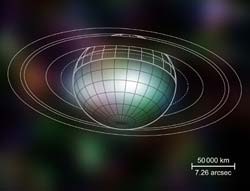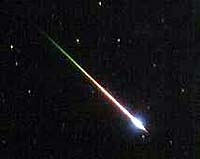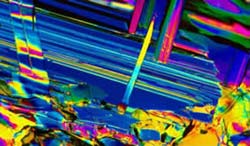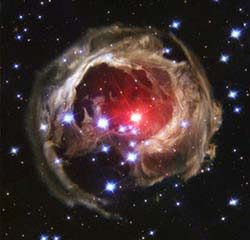Physics and Astronomy
This area deals with the fundamental laws and building blocks of nature and how they interact, the properties and the behavior of matter, and research into space and time and their structures.
innovations-report provides in-depth reports and articles on subjects such as astrophysics, laser technologies, nuclear, quantum, particle and solid-state physics, nanotechnologies, planetary research and findings (Mars, Venus) and developments related to the Hubble Telescope.

X-ray emission from Saturn
The Chandra X-ray Observatory is a space observatory dedicated to X-ray astronomy. Launched on July 23rd, 1999, this X-ray telescope is particularly dedicated to the observation of high-energy sources in the universe. It has also been used to study the following solar system objects: the Moon, Venus, Mars, Jupiter, and even the Comet C/1999 S4 LINEAR.
Using Chandra, J.-U. Ness and his colleagues detected an unambiguous X-ray emission from the planet Saturn for the first time. A few years a

First silicate stardust found in a meteorite
Ann Nguyen chose a risky project for her graduate studies at Washington University in St. Louis. A university team had already sifted through 100,000 grains from a meteorite to look for a particular type of stardust — without success.
In 2000, Nguyen decided to try again. About 59,000 grains later, her gutsy decision paid off. In the March 5 issue of Science, Nguyen and her advisor, Ernst K. Zinner, Ph.D., research professor of physics and of earth and planetary sciences, both in Arts & Sc

Study Gives Lowdown On High-Temperature Superconductivity
A new study by theoretical physicists at the University of Toronto and the University of California at Los Angeles (ULCA) could bring scientists one step closer to the dream of a superconductor that functions at room temperature, rather than the frigid temperatures more commonly found in deep space.
The findings, which appear in the March 4 issue of the journal Nature, identify three factors that explain a perplexing pattern in the temperatures at which multi-layered ceramic materials become

Towards a better understanding of the very early universe
Using a British radio telescope called the Very Small Array (VSA), located on the flanks of Mount Teide in Tenerife, astronomers from the Universities of Manchester and Cambridge and the Instituto de Astrofisica de Canarias (IAC) have made measurements of the Cosmic Microwave Background (CMB) – radiation left over from the Big Bang – which shed new light on events in the first minute fraction of the Universe’s existence.
By combining their results with those of NASA’s Wilkinson Microwa

Breakthrough in advanced photonics manufacturing
The need for advanced highly integrated photonic circuits stems from the capacity expansion of telecommunications infrastructures driven by ever-increasing customer demand. Novel design and manufacturing technologies for advanced photonic circuits emerging from PICCO could meet this need.
Ready for mass production
The work of the IST programme-funded project has provided evidence that functional photonic circuits can be created using state-of-the-art deep UV lithography. T

V838 Monocerotis revisited: Space phenomenon imitates art
“Starry Night”, Vincent van Gogh’s famous painting, is renowned for its bold whorls of light sweeping across a raging night sky. Although this image of the heavens came only from the artist’s restless imagination, a new picture from the NASA/ESA Hubble Space Telescope bears remarkable similarities to the Van Gogh work, complete with never-before-seen spirals of dust swirling across trillions of kilometres of interstellar space.
This image, obtained with the Advanced Camera for Surveys on 8